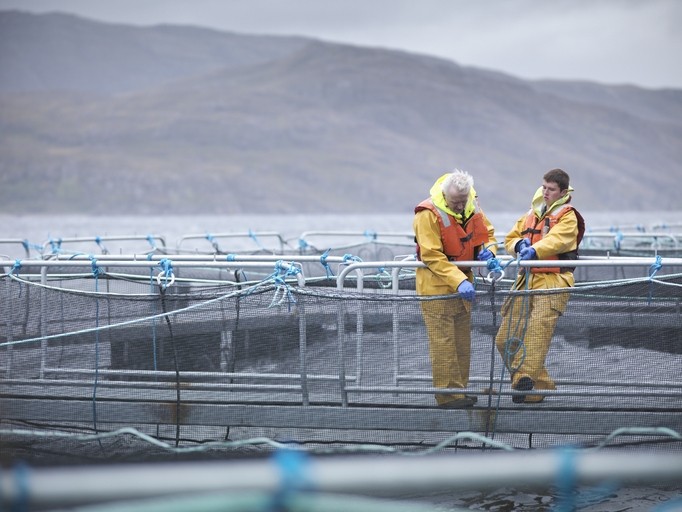Aquaculture innovation: nutrition is the key, start-up says

Feed makes up 60% of an aquaculture farmer’s costs. Each species, and each stage of that species growth requires completely different nutrition to get it to its optimal feed conversion ratio, or FCR, the measurement of how efficiently fish are fed.
In addition, the needs of that species and that stage of its growth is altered based on the environment in which it is raised. Temperature, seasonality, water quality, type of pond, timing of the feed, and amount of feed all need to be factored in to get the optimal FCR.
Wittaya Aqua is “completely focused on this space”, it says. Its platform is designed to consolidate existing data points across the seafood supply chain to drive greater profitability, sustainability and efficiency.
Data collection in aquaculture has traditionally been slow, manual and tedious, the company believes. Players across the feed-to-farm supply chain already collect their own data on details such as growth, feed intakes, efficiency of feed utilisation, survival, water temperature and other water quality parameters and stores it typically in notebooks or excel spreadsheets. Since everyone has their own unique set of data points formatted in different ways, there’s no clear way to benchmark industry standards.
Wittaya Aqua is aiming to tackle this by integrating different streams of information by farmers, feed mills and ingredient suppliers and consolidating it into one platform. With industry-wide and company-specific touchpoints, the company says it can build accurate science-backed models to help aquaculture businesses improve specific variables or functions.
For instance, if a farmer knows exactly how their feed is affecting their animal’s growth rate, they can compare their outcomes to industry benchmarks. Or a feed mill can benchmark the performance of their feeds on different farms to understand how to improve their formulations for specific customers.
It also works with multiple species in multiple geographies, from mainstream commercial ones to niche species. In 2023, seafood amounting to over 1.64 billion meals were directly enabled by Wittaya’s aquaculture platform and it says it is on track to enable 3.3 billion meals in 2024. Farms using the platform have saved up to 20% on their cost-of-feeding. It has also developed a carbon dashboard tracking the carbon footprint from commodity to feed, to farm and then onto the retailer.
Splashing the cash
The company recently landed a US$2.8 million seed round. Investors participating in the round included Yield Lab Asia Pacific, SEEDS Capital, Future Planet Capital, Conservation International Ventures and SeaAhead Blue Angels.
Currently the company is working with major aquafeed and integrated farming clients in more than 10 countries. The fresh funds will enable it to further develop its platform and expand its reach into Asia Pacific, the largest aquaculture producing region globally.
Larry Taylor, Co-Founder of Yield Lab Asia Pacific said: “By aggregating and analysing data across the value chain, their platform equips decision-makers at feed mills, farms, and ingredient suppliers with critical actionable insights tailored to their unique market challenges. Their transformation of aquaculture into a more efficient, sustainable, and data-driven industry is unmatched. With this technology in industry hand, the global seafood production is propelled into its future."
Can greater nutritional insights fix aquaculture’s perception problem?
What sets Wittaya apart is the fact the platform combines nutritional information with field performance, explainedits co-founder CEO Evan Hall. The platform’s nutritional models, for example, are powered by algorithms which adjust based on machine learning to accommodate each farms unique environment. That means the company can model the impacts of different feed ingredients on animal performance.
By way of example, Marianne Nergård, product director for Aker BioMarine, which supplies Atlantic krill to the aquaculture industry, said these insights allow it a deeper understanding and validation of its feed formulations in different parts of the world. “With the software we are able to better estimate both the nutritional value, and the economical value of adding our raw materials into the diets,” she said, “which is highly valuable in preparing product strategies, and in our conversations with partners and customers.”
Recent research, meanwhile, suggests the aquaculture industry has made significant improvements in sustainability and environmental practices over the past 20 years. But it still faces dogged criticism concerning issues such as pollution from fish waste, excess feed, antibiotics and other chemicals, and the negative effects on wild fish populations and marine ecosystems.
Innovation from the likes of Wittaya can address these concerns, believes Hall. “In the face of climate change, uncertain market dynamics, and evolving supply chains, ensuring the sustainable provision of seafood requires every stakeholder to adapt. But there is still a critical need to harness and transform the deep knowledge they each own into actionable strategies—and Wittaya Aqua is built to respond to this. We’re here to stand in this gap to lead the development of aquaculture's evolving digital ecosystem. Ensuring it’s an accurate and equitable playing field, where farmers, feed mills and ingredient suppliers can all grow together.”
He said Wittaya Aqua's platform hopes to allow aquaculture players to meet rising consumer, retail and regulatory expectations for a more transparent and improved value chain. This aligns with the broader industry movement to align practices with the rigorous standards set out by certification bodies like Best Aquaculture Practices and the Aquaculture Stewardship Council.






